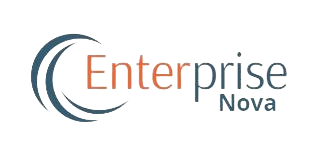The internet has changed significantly over the last thirty years. In the initial stages of Web 1.0, it primarily served as a static collection of text, a venue for reading and accessing information instead of engaging. Since that time, increasing user demands and advancements in technology have propelled the internet from Web 2.0’s social and mobile phase towards Web 3.0. This new development not only guarantees more immersive media but also a significant change in how individuals possess, manage, and benefit from the digital landscape.
At the same time, this change has brought about a provocative question, “Who owns Web 3.0?” which invites both idealism and skepticism.
On the one hand, proponents of Web3 promise a future in which users, not corporations, own and govern the infrastructure of the internet. On the other, critics argue that power and influence may simply re-centralize in new forms. The reality lies somewhere in between.
The Origin Story: Gavin Wood and the Birth of Web3
Web3’s roots trace back to Gavin Wood, co-founder of Ethereum, who coined the term in 2014 and offered a vision for a decentralized internet grounded in blockchain mechanics. Wood later founded Parity Technologies and the Web3 Foundation to help build infrastructure for decentralization. The Web3 Foundation has funded many projects, awarding grants to hundreds of decentralized application (dApp) efforts.
By invoking “Web3,” Wood sought to correct what he saw as the flaws of Web2, especially the concentration of power in big tech platforms, and instead push for trustless, decentralized systems. Yet, despite Wood’s central role in coining and promoting Web3, he is not its “owner” in a proprietary sense.
Decentralization and Token-Based Ownership
In theory, Web3 is owned by its users and maintained by community participants. The core mechanism is tokenization, users can hold cryptographic tokens (fungible or non-fungible), which confer property rights, voting rights, or governance roles within decentralized networks. Blockchains, by design, have no single owner; they operate across many nodes, and protocol rules are enforced by consensus.
That said, ownership in Web3 is messy in practice. Many projects hinge on founders, early backers, or large token holders, who may wield outsized influence over direction, protocol upgrades, or governance decisions. Critics warn that this introduces new hierarchies, not unlike those of Web2.
Who Actually Holds the Keys?
While Web3 aims for collective ownership, certain players continue to hold significant structural influence:
- Core developers and protocol maintainers frequently suggest enhancements, bug corrections, or consensus modifications. The choices they make influence the evolution of the network, even when modifications need community consent.
- Foundations and non-profits, like the Web3 Foundation, can influence funding, management, and visibility, thus determining which projects receive support.
- Early token distributors, founders, investors, or institutions can hold governance tokens that allow them to vote on upgrades or direction. Their power often scales as adoption grows.
Thus, the question “Who owns Web3?” is less about a single entity and more about who holds influence.
The Ownership Paradox
Web3 promises that no one owns it, yet everyone participates in it.
But absolute decentralization is hard to realize. Infrastructure still depends on central points: foundations, development teams, or major validators. Also, open-source software underlies Web3, meaning code is owned by no single person but shared under permissive licenses.
In practice, Web3 ends up being a spectrum of ownership and governance. On one side, there are core visionaries like Gavin Wood whose ideas and institutions helped birth it; on the other, there are broad swaths of developers, users, and token holders who contribute code, stake capital, and vote.
A Balanced Take
No one “owns” Web 3.0 in a centralized or proprietary sense. Its architecture is meant to avoid single-point control. But in the emergent Web3 world, influence, capital, and early advantage often concentrate power in new forms. The real conversation is not about exclusive ownership, it is about designing governance, incentives, and accountability so that Web3 lives up to its promise of a more equitable, user-owned internet.

